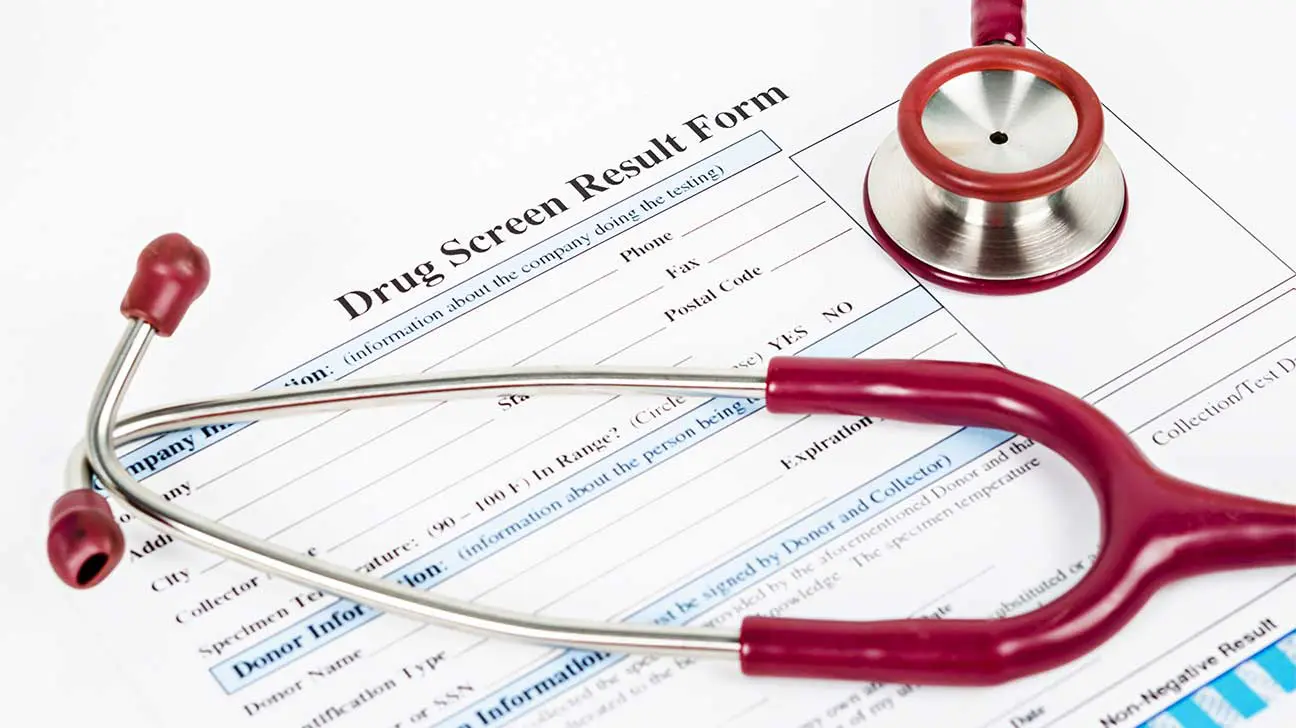
Methylenedioxymethamphetamine (MDMA), also known as molly and ecstasy, is an illicit drug that is often used recreationally for its hallucinogenic and stimulant effects.
One common question among people who take molly is if and for how long it will show up in a drug test.
The amount of time it’s detectable—also known as the drug detection time—will depend on which type of drug test is used, amount of molly used, and other factors.
Molly can remain in the urine, blood, and oral fluids for up to a few days on average, with traces detectable in samples of hair for up to 90 days.
Molly Detection Times
Molly use can be detected through various drug testing methods, all of which can vary in their sensitivity and detection windows.
Average detection times for MDMA/molly, by testing method:
- molly urine tests: up to three days
- molly blood tests: up to two days
- molly saliva tests: up to two days
- molly hair tests: up to 90 days
Hair testing can detect the use of molly for the longest period of time, followed by urine, blood, and oral fluid tests.
People who use molly regularly or have developed a tolerance may have a buildup of the drug in their system, which can result in a longer detection time.
How Long Does Molly Stay In Urine?
Urine screenings are the most common drug testing method for MDMA use. Molly can be detectable in urine for one to three days on average.
Chronic users of molly may have traces of molly in urine for up to a week.
Learn more about detecting molly/ecstasy in urine
How Long Does Molly Stay In Blood?
Research indicates that molly can be detected in the blood for one to two days after last use, on average.
Learn more about detecting molly/ecstasy in blood
How Long Does Molly Stay In Oral Fluid?
Ecstasy use can be detected in saliva (spit) for up to 48 hours.
Saliva tests are a common method used to test for drug use following a motor vehicle accident, as they can detect drug use very quickly.
How Long Does Molly Stay In Hair?
Common drugs of abuse and their metabolites can remain detectable in hair follicles for up to 90 days after last use.
Hair testing is commonly used to detect chronic, or repeated patterns, of substance use.
Learn more about detecting molly/ecstasy in hair
What Factors Can Affect How Long Molly Stays In Your System?
The amount of time it takes to get molly out of your system can depend on a wide range of factors related to your drug use, biological factors, and overall health.
Factors that can affect molly detection times include:
- frequency of drug use
- amount of molly used
- use of multiple drugs (e.g. cannabis, other hallucinogenic drugs)
- co-occurring physical or mental health conditions
- level of hydration
- drug dependence and tolerance
Your body’s ability to metabolize drugs can also affect how long it takes for the body to rid itself of molly.
Having a slower metabolism—which can come with older age, poor kidney function, or other health issues—may lengthen the detection window.
How To Get Molly Out Of Your System
The only reliable way to get molly out of your system is to stop using molly.
If you don’t use molly often, or have only used it once, it should be out of your system within a few days, with the exception of traces left in the hair.
Reasons It May Be Difficult To Stop Using Molly
Getting off molly can be difficult for some people, however—specifically people who are dependent on molly.
Some research shows that people who use molly very often can experience withdrawal symptoms—such as depression, fatigue, and loss of appetite.
Detox For Molly Abuse
If you have a substance use disorder or use multiple drugs, a detox program may be recommended as a safe way to get molly out of your system.
Molly Abuse And Addiction
Molly is a powerful drug that affects brain chemicals associated with other common drugs of abuse—specifically, the neurotransmitters dopamine, serotonin, and norepinephrine.
Dopamine in particular can have reinforcing effects when an excessive amount of it is released through drug use.
The addictive potential of molly is a subject of ongoing research. Although it’s not believed to be as addictive as some illicit drugs, such as cocaine, there is evidence to suggest it can be abused and become addictive.
Getting Help For Molly Abuse
Any drug can become a drug of abuse. Chronic use of molly to numb, stimulate, or self-medicate can be a sign of drug abuse and addiction.
Within a treatment program, healthcare professionals can offer therapy, medication, and mental health counseling to address why a person may be using molly.
If you or a loved one is using molly very often, our addiction specialists can help you find a treatment program that’s right for you.
Call our helpline today to learn more about how to find treatment for substance abuse near you.
Addiction Resource aims to provide only the most current, accurate information in regards to addiction and addiction treatment, which means we only reference the most credible sources available.
These include peer-reviewed journals, government entities and academic institutions, and leaders in addiction healthcare and advocacy. Learn more about how we safeguard our content by viewing our editorial policy.
- U.S. National Institute on Drug Abuse (NIDA)—MDMA (Ecstasy/Molly) DrugFacts
https://www.drugabuse.gov/publications/drugfacts/mdma-ecstasymolly - U.S. National Institute on Drug Abuse (NIDA)—MDMA (Ecstasy) Abuse Research Report
https://www.drugabuse.gov/publications/research-reports/mdma-ecstasy-abuse/mdma-addictive - U.S. National Library of Medicine: PubMed—Detection times of drugs of abuse in blood, urine, and oral fluid
https://pubmed.ncbi.nlm.nih.gov/15228165/ - Redwood Toxicology Laboratory—Laboratory Testing Reference Guide
https://supremecourt.nebraska.gov/sites/default/files/Programs/CIP/events/redwood/LAB_Reference_Guide.pdf


